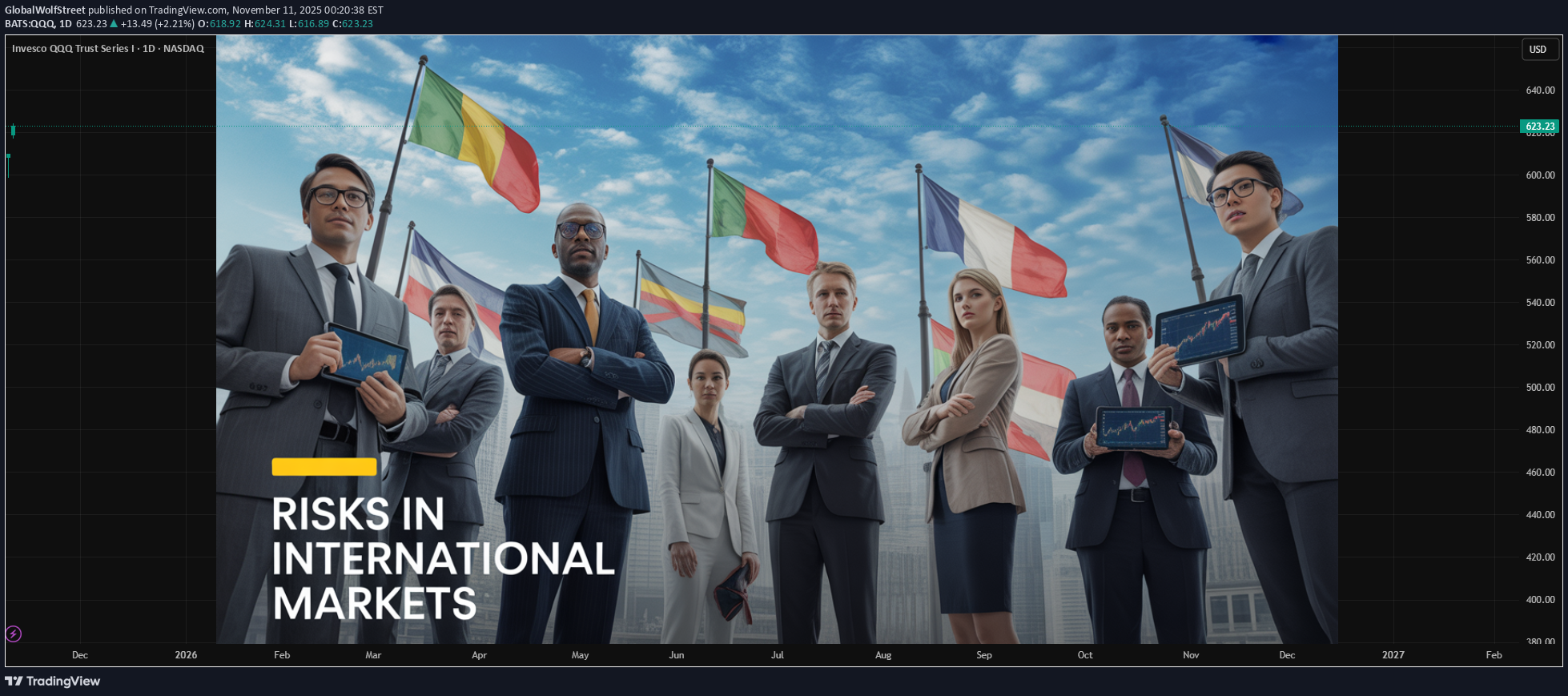تحليل التحليل الفني GlobalWolfStreet حول QQQX في رمز في 11/11/2025
چگونه ریسکهای تجارت بینالملل را شناسایی و مدیریت کنیم؟ (راهنمای جامع)

1. Introduction to International Market Risks When investors or companies operate globally, they face uncertainties that can significantly affect profitability and market stability. The international marketplace is dynamic, influenced by macroeconomic factors, geopolitical tensions, and regulatory shifts. These risks can either be systematic—affecting all participants (like global recessions or currency devaluations)—or unsystematic, impacting specific sectors or countries (like political instability or trade restrictions). The ability to identify, evaluate, and mitigate these risks determines the success and sustainability of international trading activities. 2. Types of Risks in International Market Trading a) Exchange Rate Risk (Currency Risk) Exchange rate risk is among the most significant challenges in international trading. It arises because the value of currencies fluctuates daily due to factors like interest rate changes, inflation differentials, and macroeconomic performance. For example, if an Indian exporter sells products to a European buyer in euros, but the euro depreciates against the rupee before payment is received, the exporter earns less in rupees than expected. Similarly, investors holding foreign assets may face losses when converting profits back to their home currency. Hedging instruments like forward contracts, futures, and currency options are widely used to mitigate exchange rate risks. Additionally, diversification of currency exposure across multiple regions helps balance potential losses. b) Political and Geopolitical Risk Political instability, government policy changes, trade restrictions, sanctions, or even wars can dramatically affect international trading conditions. For instance, the Russia-Ukraine conflict caused significant disruptions in global energy markets, affecting prices and supply chains worldwide. Geopolitical tensions can lead to nationalization of foreign assets, expropriation, or sudden changes in tariffs and trade agreements. Investors and multinational corporations must carefully assess the political climate of each country before entering or expanding operations. Political risk insurance, offered by international agencies like the Multilateral Investment Guarantee Agency (MIGA), helps safeguard against such uncertainties. c) Economic and Financial Risk Economic instability—such as recessions, inflation surges, or financial crises—can harm international traders and investors. A slowdown in global demand or a liquidity crunch in one region can ripple through global markets. For instance, the 2008 global financial crisis began in the U.S. mortgage sector but quickly impacted banks, stock markets, and economies worldwide. Economic risk also involves the possibility of a country’s inability to meet its debt obligations, affecting the value of its bonds and currency. Monitoring macroeconomic indicators like GDP growth, fiscal balance, inflation, and interest rates is essential for managing such risks. d) Legal and Regulatory Risk Each country operates under different laws regarding trade, taxation, investment, and environmental protection. International traders must comply with varying legal standards, which can be complex and costly. Sudden regulatory changes, import/export restrictions, or changes in tax policy can alter the profitability of international operations. For example, changes in customs duties or the imposition of new compliance requirements by the European Union can affect exporters from developing countries. Legal due diligence and the use of international trade agreements like the World Trade Organization (WTO) rules can minimize exposure to regulatory uncertainties. e) Credit and Payment Risk Credit risk refers to the possibility that a foreign buyer or partner fails to fulfill payment obligations. In international trade, the physical distance and differing legal systems increase the difficulty of enforcing contracts. A company exporting goods might face non-payment due to insolvency, political turmoil, or foreign exchange restrictions in the buyer’s country. To manage this, traders often use letters of credit (LCs), export credit insurance, or advance payment agreements. These mechanisms provide assurance and reduce the likelihood of bad debts in cross-border transactions. f) Country Risk Country risk is a broad concept encompassing political, economic, and financial stability within a nation. It measures how likely it is that an investor or trader will face losses due to adverse events in a specific country. For instance, a country facing high inflation, unstable government, or external debt crisis poses higher risks to investors. Country risk assessments, often published by credit rating agencies like Moody’s, S&P, or Fitch, help investors gauge the level of safety before investing or trading. g) Cultural and Communication Risk Cultural differences can cause misunderstandings, negotiation failures, or marketing errors. Business practices, ethics, and communication styles vary across regions, affecting relationships and deal outcomes. For example, marketing strategies that work in Western countries may not succeed in Asia due to differing cultural values and consumer behavior. Cross-cultural training, hiring local experts, and adapting products to local preferences help reduce this risk. h) Market and Liquidity Risk International traders and investors also face market volatility due to fluctuating global demand, supply disruptions, or sudden investor sentiment changes. Liquidity risk arises when an investor cannot easily convert assets into cash without a significant price loss. Emerging markets often have less liquid financial instruments, increasing vulnerability during economic shocks. Portfolio diversification and maintaining adequate cash reserves can mitigate market and liquidity risks. i) Operational and Supply Chain Risk Operational risks stem from failures in logistics, technology, or internal processes. In global trade, disruptions in supply chains—caused by natural disasters, pandemics, or port congestion—can delay deliveries and increase costs. For example, the COVID-19 pandemic exposed severe weaknesses in global supply chains, leading to shortages of essential goods. Companies are now adopting risk management frameworks and diversifying supply bases to enhance resilience. 3. Methods of Managing International Market Risks To thrive in the global marketplace, risk management must be proactive and strategic. The following approaches are commonly used: Hedging Strategies: Using financial instruments such as futures, options, and swaps to lock in exchange rates or commodity prices reduces exposure to market volatility. Diversification: Investing or trading across multiple countries, industries, and currencies helps spread risk and offset potential losses from one market. Insurance and Guarantees: Political risk insurance, export credit insurance, and guarantees from organizations like the Export-Import Bank reduce exposure to default and political risks. Due Diligence and Research: Regularly analyzing economic indicators, political developments, and market trends helps in making informed trading decisions. Partnerships and Local Expertise: Collaborating with local firms provides insights into regional regulations and cultural norms, reducing operational and compliance risks. 4. The Importance of Risk Management in International Markets Effective risk management is essential for maintaining stability, profitability, and competitiveness in international markets. It protects capital and ensures business continuity. It enhances investor confidence, attracting global partnerships and funding. It supports strategic decision-making, allowing firms to expand globally with calculated exposure. It prevents major losses during unpredictable global events, such as currency crashes or political upheavals. 5. Conclusion Trading in international markets offers vast opportunities for growth, diversification, and innovation. However, it also brings a wide range of risks—financial, political, regulatory, and cultural—that can severely impact success if not properly managed. A structured approach to identifying, analyzing, and mitigating these risks is crucial. By using hedging tools, conducting thorough market research, and adopting diversified strategies, investors and businesses can navigate the complexities of global markets more confidently. In an increasingly interconnected world, those who understand and manage international risks effectively are best positioned to thrive in the ever-evolving landscape of global trade and finance.
